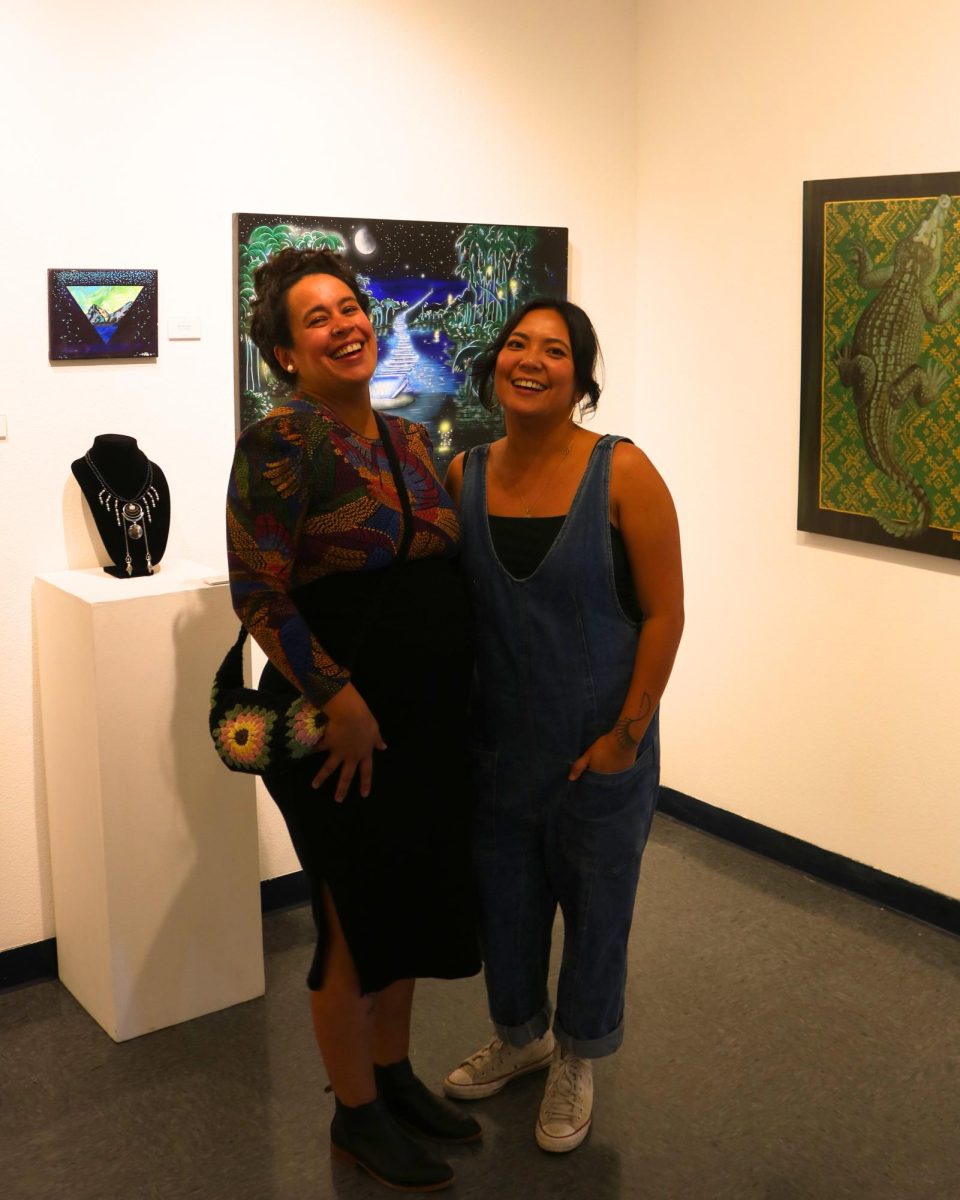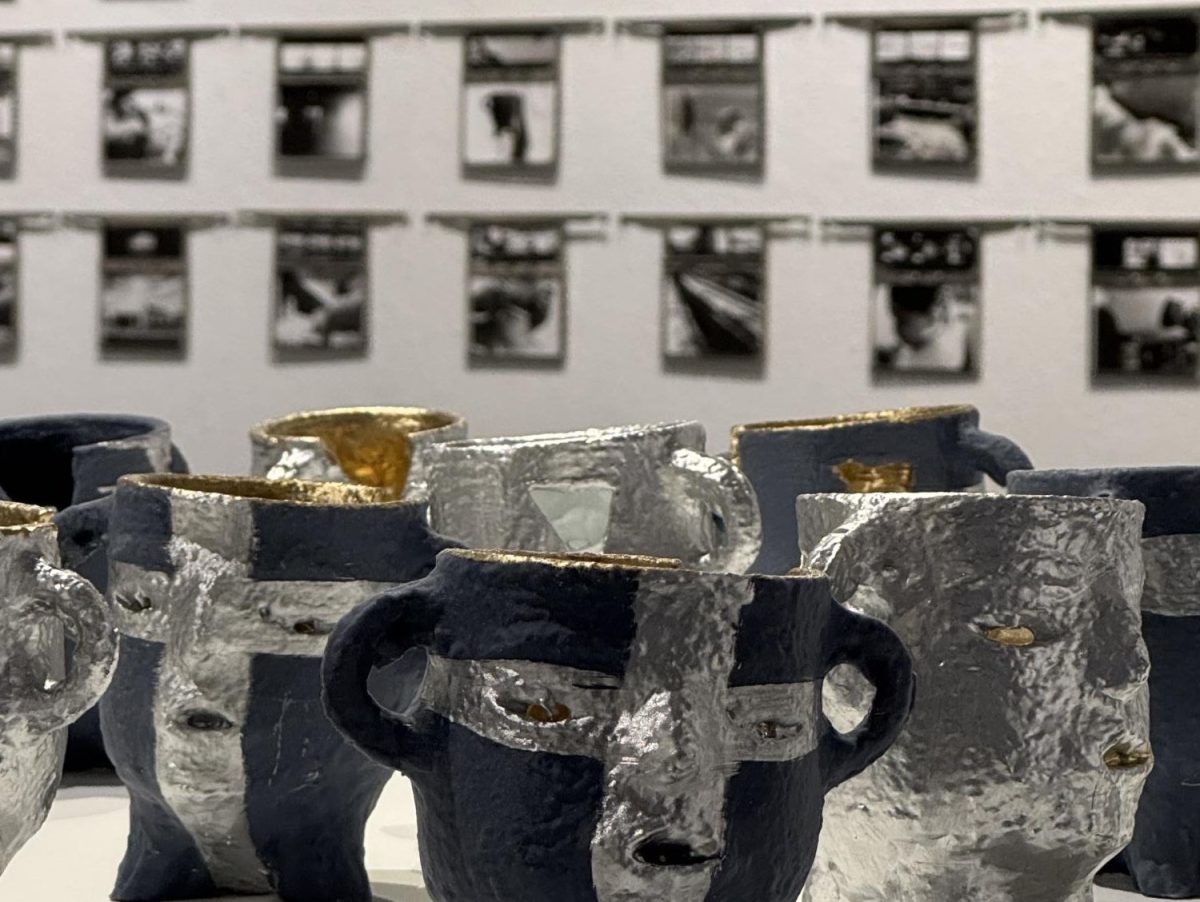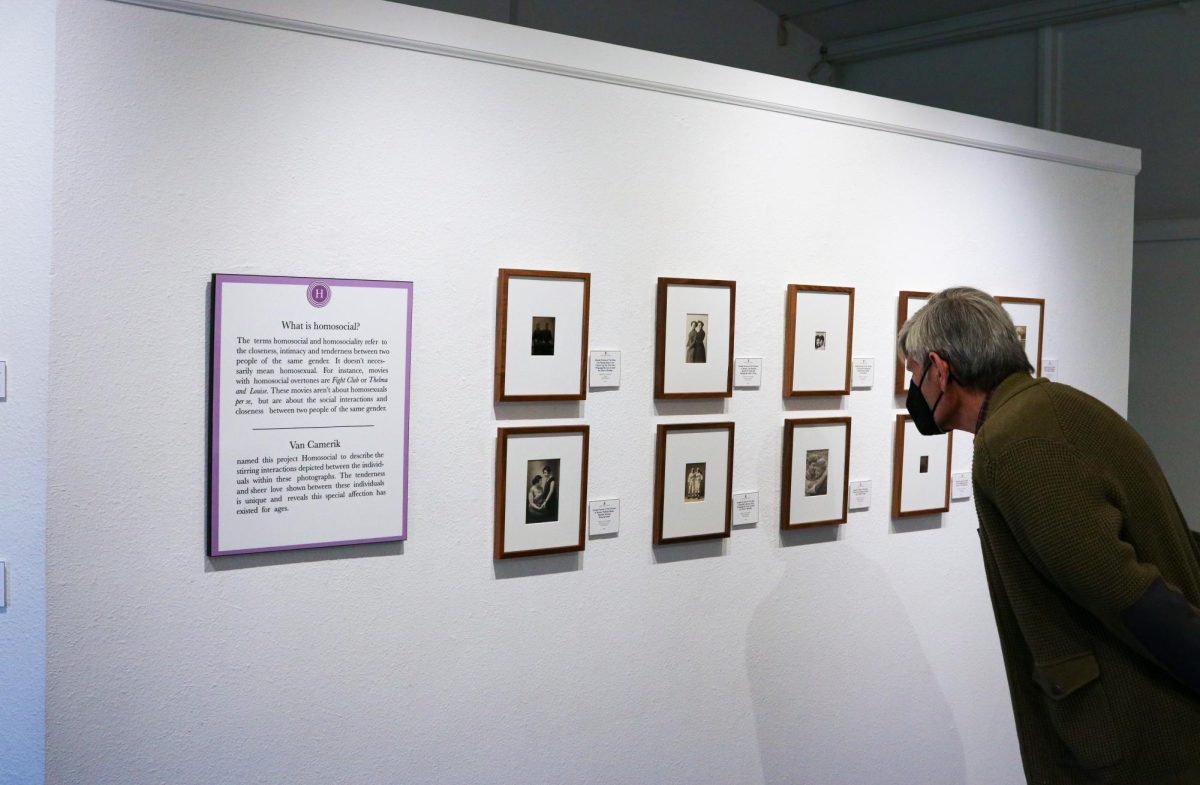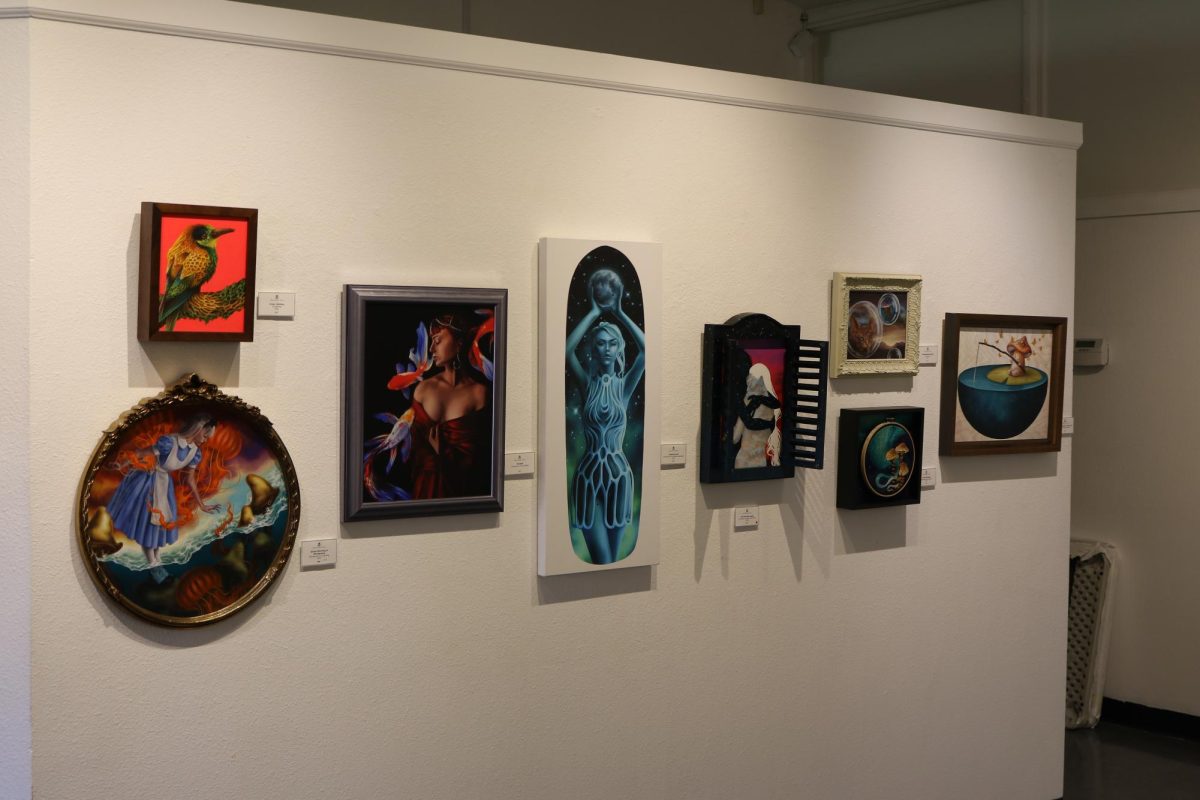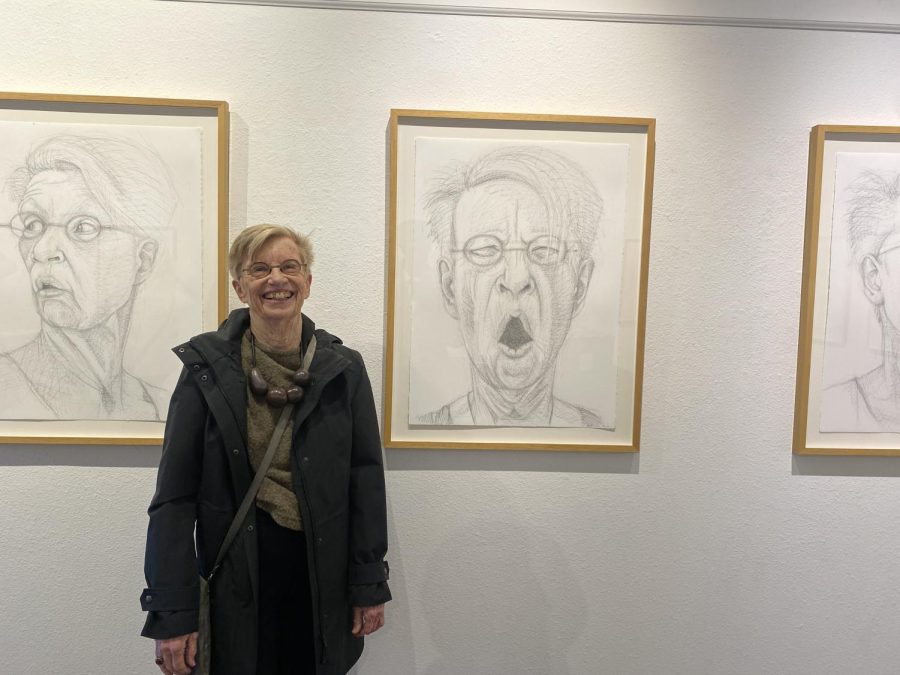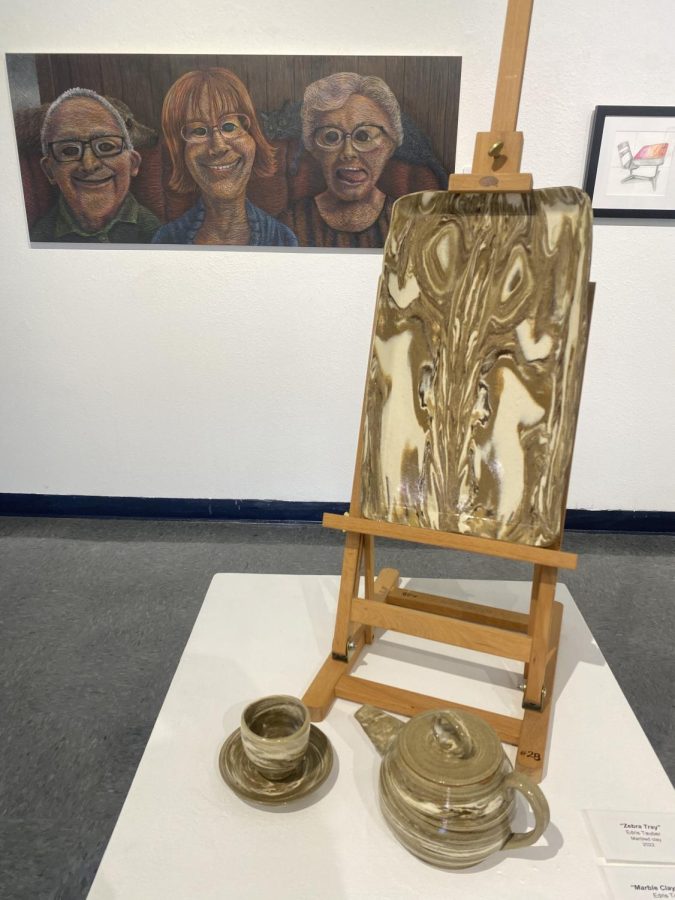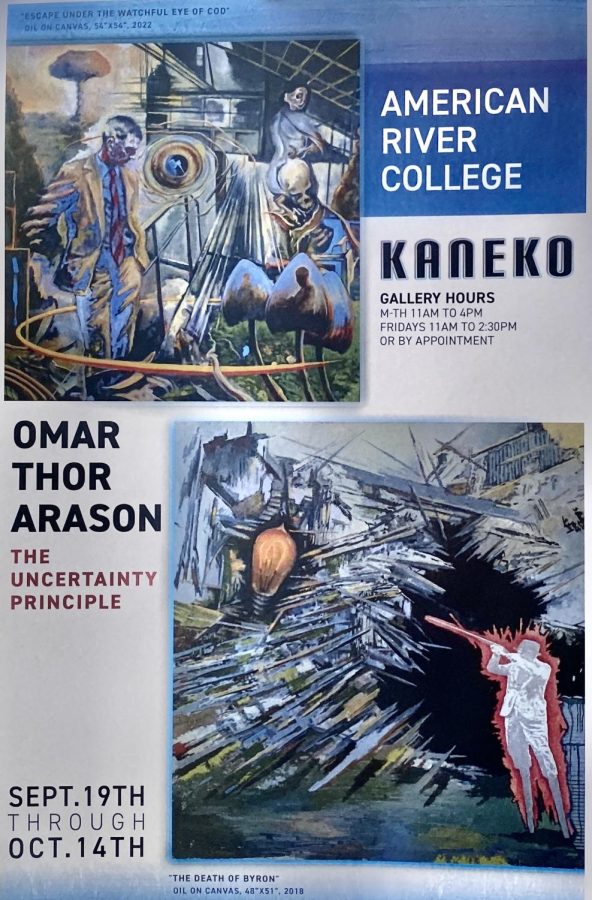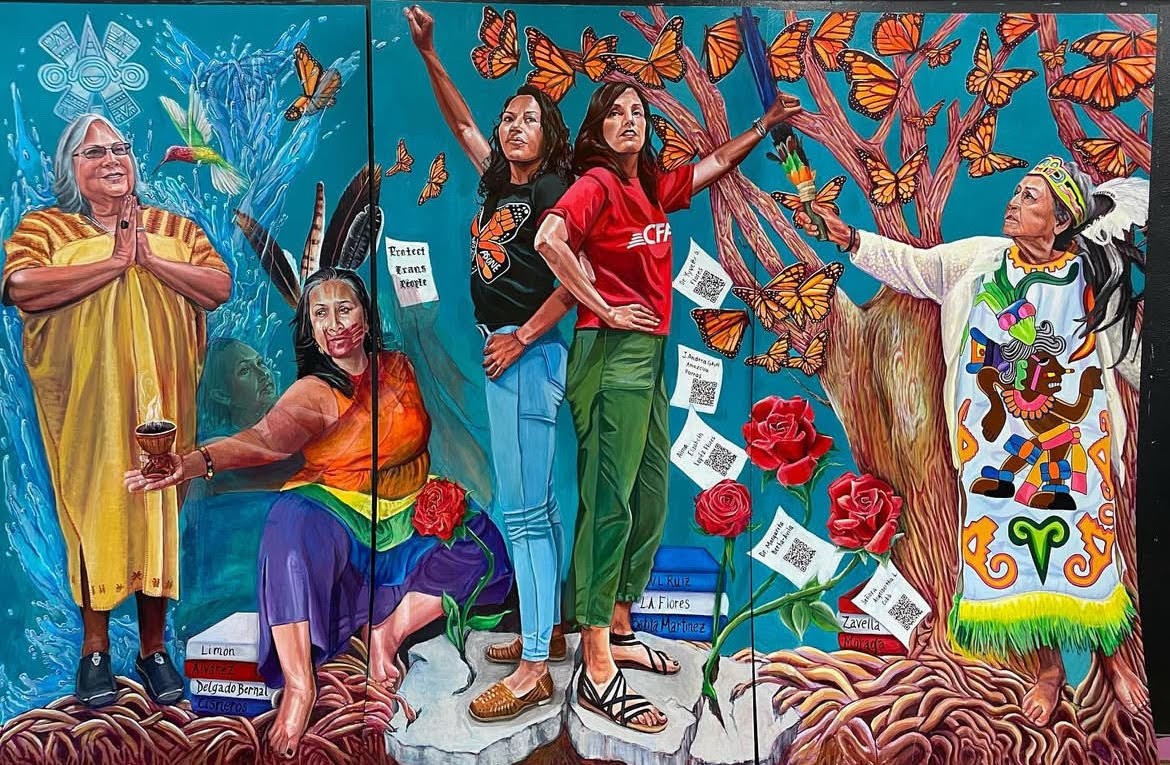The Kaneko Gallery hosted an exhibition this month to highlight local artists and their personal messages of culture and identity. The exhibition ran from Oct. 21 to Nov. 14, with an opening event and weeks of gallery walks. Patrons who attended the event were greeted with an introduction speech from the guest artists, as well as some background on the significance of the exhibition in telling their stories.
When entering the Kaneko Gallery, a display of vibrant colors and bold imagery is waiting to stun any visitors in both visuals and story. This exhibition is not only an outlet for people to share their artistic creations, but also their voice. American River College’s Kaneko Gallery hosted the Agimat group exhibition with help from a few guest curators in honor of Filipino American History Month. However, these artists strive for something more than artistic praise, as they immerse the audience into their personal stories of culture, identity, and the important conversations of decolonization.
The title of the exhibition is “Agimat”, which is the Tagalog word for “amulet or charm” but for this exhibition the meaning is more deep rooted than it appears. In the context of this exhibition, the theme focuses on the idea of protection, and how each artist interprets it. The themes of protection presented in the art focus on how they protect their community, heritage, history and culture, as well as examine what gives them strength to dismantle colonialism. The immersive aspects of this exhibition were displayed through the diversity in style and color of each piece displayed. Walls adorned with vivid images, handmade quilts, jewelry and an altar at the center that work to share each artist’s personal stories.
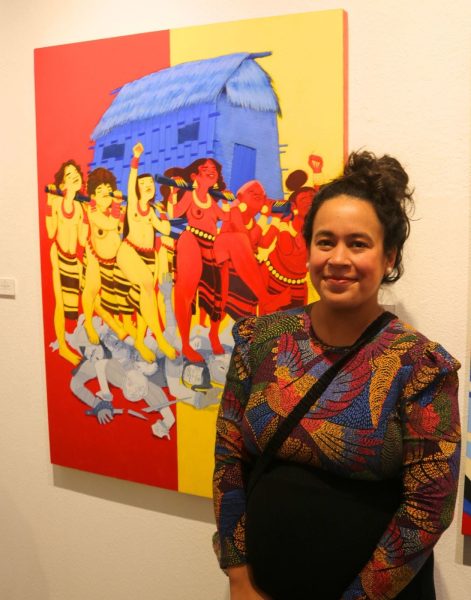
But one of the most striking pieces displayed belongs to guest curator Niki Toney, as one bold step in her “brown girl renaissance.” The piece uses rich colors to depict a group of Filipina women performing a Bayanihan, which she describes as the traditional practice of a moving of house and protecting of house. The power and cultural appreciation of these women is shown as they perform this traditional practice, all while simultaneously stomping on colonizers.
“It fits into the theme in that way of protection of home and culture while also kind of smashing capitalism at the same time,” Toney said.
Even though the art itself is an integral aspect of this exhibition, the behind the scenes curation proved to be just as essential. When creating a prompt for the artists of this exhibition, the insightful and complex question of, “What does decolonization mean to you?” was asked of them. It is this topic that sparked a unique outlet of expression, as well as invoked deeper conversations at the event itself.
As the exhibition was opened by guest artists Niki Toney and Franceska Gamez, they gave an insightful backstory on the theme as well as the importance of conversation topics like colonization and its effects. This conversation even prompted audience members to share stories and further dive into their own conversations on decolonization. One of the most unique aspects of the exhibition curation was the voices chosen to uplift. As these voices solely belong to an array of female and nonbinary artists, essentially providing a voice for the historically silenced.
Franceska Gamez goes further into the importance of curating this female and nonbinary dominant space, especially as it affects the audience’s experience.
“Immigrants and brown women have been historically marginalized and so I hope by the telling of their stories through visual art people can gain new perspectives into their stories and their lives,” Gamez said.
Providing many of these new artists a safe space to amplify their art proves essential. As it works to bridge the gap of those previously silenced voices and those that traditionally held the platform. But one of the most valuable aspects is the physical experience this exhibition has given to students and artists.
Sacramento State art history professor Rachel Miller spoke alongside her colleague during the gallery introductions to congratulate the artists and provide information to the art students. As many ARC students choose to transfer to Sac State, Miller finds importance in these unique experiences that are provided.
“It’s amazing to be able to get that kind of experience at this level,” Miller said. “Students come into Sac State with so many amazing experiences already so it makes my job really easy.”
Experiences like these are not only crucial to strengthen the artists but the community as well. As the audience is introduced to new perspectives and stories of identity, they can gain a better understanding of topics that they may not have had to think of before. After the success of this exhibition, patrons are eager to see more artistic displays at ARC’s Kaneko Gallery.


